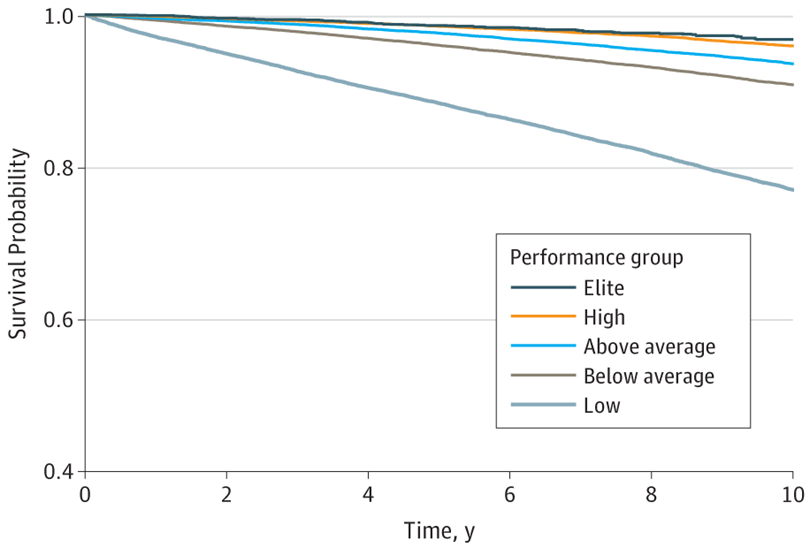Considerations For High Intensity Interval Training On Aerobic Fitness
Introduction
High-intensity interval training (HIIT) is an exercise protocol that uses alternating bouts of intense exercise with short to moderate rest periods. HIIT allows one to achieve significant gains in considerably less time than traditional continuous low intensity endurance style routines. Integrating HIIT into your program can optimize time while still creating significant metabolic improvements that enhance your VO2 max, mitochondrial efficiency, and even your cognitive health.
Cardiorespiratory Fitness and Mortality
The protective, positive relationship between cardiorespiratory fitness(CRF) and decreased mortality has been well documented. Some evidence even suggests there is no upper limit to the benefits of higher CRF. For example, in one cohort study, elite athletes showed a nearly 80% lower risk of premature death compared to a less cardiovascularly fit individual of the same age.
JAMA Network Open. 2018;1(6):e183605. doi:10.1001/jamanetworkopen.2018.3605
Can You Get The Same Benefits From HIIT?
There have been several studies done comparing short interval high intensity training to traditional endurance training methods and how it compares at producing improvements to cardiometabolic health. For instance, one study compared sprint interval training (SIT) of 3 x 20 second all out sprints in one group to 45 minutes of continuous cycling at 70% heart rate in another. After both 6 and 12 weeks, the results showed that in both groups VO2 max, insulin sensitivity, and mitochondrial content all increased similarly [1].
This is huge because it implies that you can get the same improvements despite a five fold difference in time commitment. This does not mean there is no benefit to zone 2 style training, however. Looking at ultra high level training programs, it is nearly impossible to solely do interval training at the training frequency needed for those athletes. Zone 2 training most obviously offers a lower intensity. On days in which athletes may be more physiologically stressed, it could be worthwhile to consider a reduction in intensity.
Conclusion
The research shows there is something to HIIT and its improvements on CRF. This should be an important factor when it comes to programming your own workout routines. For most people, it is mentally easier to commit to a 20 minute workout than an hour one. And if I can get the same results from a 20 minute workout as a 60 minute one, why shouldn’t I? These HIIT interval workouts do not always need to be “all out” during your working sets either. Hitting at least 80% of your max heart rate is a good place to start. Below are a couple of basic intervals to try out if you are so inclined:
Every minute on the minute (EMOTM)
1 minute work - 1 minute rest
20-30 seconds work : 2-4 minutes rest (High intensity) - 3 Rounds/session
Tabata - 20 sec work : 10 sec rest - 8 Rounds (Two rounds with 2 min rest in between = 10 minute workout)
Happy Training!
References
Gillen JB, Martin BJ, MacInnis MJ, Skelly LE, Tarnopolsky MA, Gibala MJ (2016) Twelve Weeks of Sprint Interval Training Improves Indices of Cardiometabolic Health Similar to Traditional Endurance Training despite a Five-Fold Lower Exercise Volume and Time Commitment. PLoS ONE 11(4): e0154075. doi:10.1371/journal.pone.0154075


